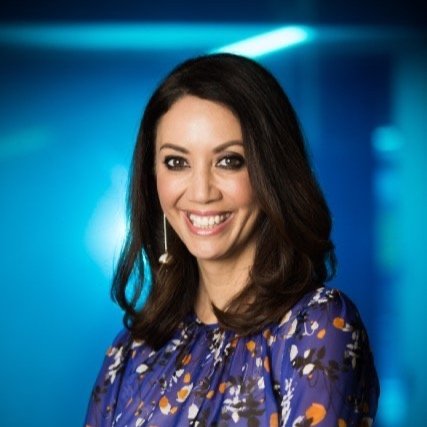Miriama Kamo
“When I wrote my first book The Stolen Stars of Matariki…
I enjoyed working with my publisher Scholastic so much that afterwards we began talking about whether we could create another book together. We talked about how the Matariki cluster is celebrated around the world, and the way it has informed survival for millennia in so many places, under different names and with different stories. It’s a fascinating topic, but it was also clear to me that we could only attempt a book like this if we were able to create it alongside the pre-eminent expert on Matariki, Professor Rangi Matamua.
I was delighted when Rangi agreed to write Matariki Around the World with me. It will be a highlight for me forever. Rangi is not just the leading light of the return of this mātauranga and a formidable academic, he’s also the loveliest (and funniest) person and it was a joy to work with him. He would send through the research (his global contacts in astronomy are excellent too) and I would turn it into what I hoped was child-friendly language. Then we’d bat it back and forth, collaborating closely on all the details, until we were both happy. When it came to giving life to the stories visually, we were also lucky to be able to work with Isobel Joy Te Aho-White. Her illustrations are sensational! Izzy would send working pictures and we would feedback our thoughts, though really, the illustrations are Izzy’s remarkable vision.
We knew it was important to take care with all the stories in the book. Telling the mātauranga Māori stories, for example, we were careful to say that not all iwi follow Matariki. West coast iwi, for example, like those around Taranaki look to Puanga instead. Other iwi follow other stars, but Matariki is widely accepted. It’s important that Māori aren’t seen as following only one set of mātauranga across the country; our views are diverse and so too are our beliefs.
When it comes to our responsibilities as authors telling these stories and sharing traditional knowledge respectfully, it’s vital to consult the experts, that’s why I wanted to work with Rangi and why we consulted regional experts to guide our telling of the stories from other places and cultures. In terms of the knowledge itself, it’s important to me to not just write a book about it, but to see how I can mindfully live it. This isn’t just the return of some lovely old fashioned beliefs, this is potent, robust knowledge which is embedded in these lands. This is knowledge designed for survival in Aotearoa. As we go deeper into the climate crisis, this mātauranga will become more vital than ever for helping guide us in our response. So, part of the respect lies in the implementation, the living of these wisdoms.
I’m fascinated by what connects us around the world, the commonalities, the humanity that we all share. So, the cluster, and this book, is another way to investigate that. It’s remarkable how much similarity our global stories have; seven sisters, for example, is a common theme. But also, the rising of the cluster means different things to different cultures, but underpinning all of that is storytelling. My favourite author Joan Didion wrote ‘we tell ourselves stories in order to live’. Matariki is the embodiment of that sentiment.”
Miriama Kamo is an award-winning journalist and author of
The Stolen Stars of Matariki and Matariki Around the World.

